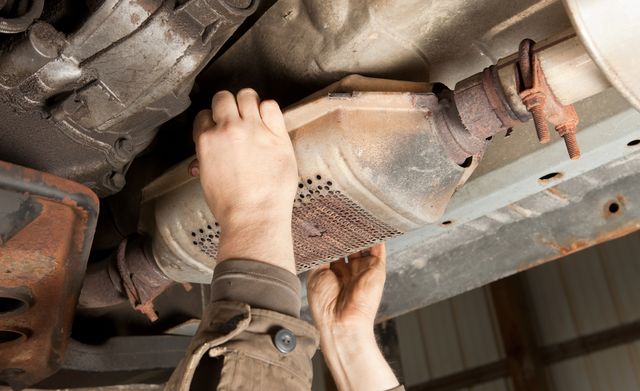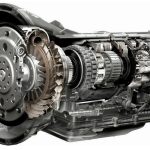
Definition
The catalytic converter is part of a vehicle’s exhaust system, located in the exhaust pipe between the manifold and the muffler.
It is designed to convert the harmful, noxious compounds and gases that are created during the combustion process – including hydrocarbons from unburnt fuel, carbon monoxide, and oxides of nitrogen – into less noxious elements such as nitrogen, oxygen, carbon dioxide, and water.
It gets its name because it utilizes a catalyst – a combination of metals including platinum, palladium, and rhodium – that, when heated, causes chemical reactions that convert those harmful compounds.
From the outside, the catalytic converter doesn’t look like much, just a boxy lump in the exhaust pipe.
On the inside, however, there’s some clever stuff going on.
And that clever stuff is not just isolated to the converter but is linked to other systems in the car to ensure that emissions from the tailpipe are cut to the minimum possible.
Inside, the converter has a dense, honeycomb ceramic structure that is lined with the catalyst material.
The honeycomb design means there is a very large surface area packed into a small space allowing for more catalyst material to react with the noxious compounds and gases flowing through it.
The ceramic material also helps to keep the converter hot – a requirement for the reactions to be at their most effective.
There are actually two reactions taking place inside the converter.
Reduction catalysts work to remove oxygen from the nitrogen oxide atoms, resulting in Nitrogen (the stuff that makes up 78% of our atmosphere) and oxygen.
An oxidation catalyst reaction also takes place, which converts carbon monoxide and hydrocarbons to carbon dioxide and water.
Knowing the catalytic converter is working at its best is where the link to other systems in the car comes into play.
Placed before and after the converter are oxygen sensors that are connected to the car’s ECU.
The sensors measure the amount of oxygen in the exhaust and the ECU monitors that data and can adjust the fuel/air mixture in the engine’s combustion chamber accordingly.
It’s all very clever stuff and while no system is perfect, the catalytic converter has certainly played a major role in making the motor car a cleaner machine.
It’s an important piece of kit and quite robust but it can be damaged, including via excessive unburnt fuel in the exhaust.
This can cause the catalysts to reach extremely high temperatures and reduce the converter’s efficiency.
A replacement is an expensive item, so it pays to keep your car serviced regularly and to act quickly if you notice any changes in the way your car performs.
Keeping the catalytic converter in good health means you’ll be doing your bit to save the planet as well as save some of your hard-earned cash.
Where is the Catalytic Converter Located?
Your catalytic converter is located on the underside of your car, in the exhaust system between the exhaust manifold and muffler.
What are Catalytic Converters Made of?
The part itself is either beaded or honeycomb-shaped and coated in a metal catalyst, usually a combination of platinum, rhodium, and palladium.
How Do Catalytic Converters Work?
When exhaust gases pass through a heated catalytic converter, two catalytic events (chemical reactions) take place:
- The reduction catalyst is the first of the two catalytic events to occur. It uses metal catalysts to reduce harmful nitrogen oxides by separating the molecules into nitrogen and oxygen. The nitrogen is trapped within the converter, while the oxygen passes through
- The oxidation catalyst is the second catalytic event. It reduces unburned hydrocarbons and carbon monoxide by burning (oxidizing) them over the metal catalyst.
Essentially, a catalytic converter filters out harmful byproducts in the exhaust gases and burns them up. And while the main function of a catalytic converter is to reduce harmful emissions, it also improves your car’s efficiency. A well-maintained car will extend the life of your catalytic converter, minimizing the possibility of a costly catalytic converter repair or replacement.









